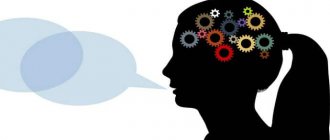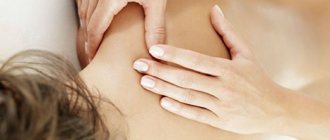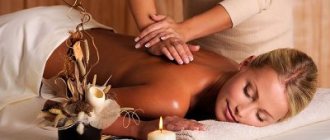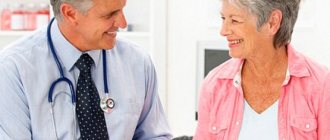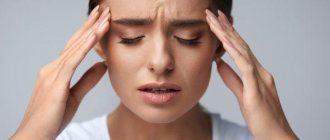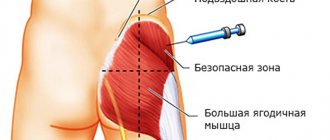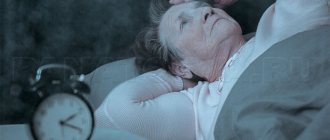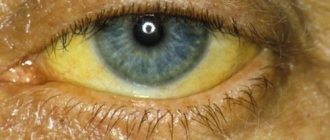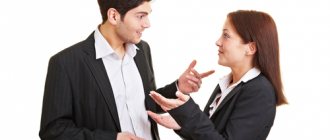Strengthening and rehabilitation massage
Caring for bedridden patients often includes massage, since this is one of the few methods that can be used to achieve normalization of blood flow, blood pressure, resorption of hematomas, and swelling. Moreover, unlike drug treatment, massage eliminates the occurrence of side effects, triggering the mechanism of natural restoration of tissue cells and normalization of metabolic processes.
Rehabilitation massage for a bedridden patient allows you to quickly restore the body after severe injuries (fractures of the spine, femur) and surgical operations. This procedure is prescribed without fail for patients after a stroke (paralysis, paresis), injuries to the musculoskeletal system, with various edema, since it perfectly relieves pain, eliminates the appearance of bedsores and congestion, and accelerates the restoration of blood vessels, muscle and joint tissues.
Effect of massage
The beneficial effect of massage is ensured by the mechanical action of the specialist’s hands on the body’s tissues - this is rubbing, squeezing, stretching and displacement of various areas of the skin, muscle tissue, and tendons. As a result, the circulation of lymph and blood increases, stagnation is prevented, metabolism accelerates and the removal of dying cells from the body.
However, the impact of massage is not limited to this; massage for the disabled or patients who have undergone major surgery has a reflexive, humoral effect on the nervous system (central and autonomic). This aspect of the procedure is known, as a rule, only to specialists. The result of the massage therapist’s actions is irritation of the nerve receptors of the body tissues - these are ligaments, vessel walls, muscle tissue, skin.
The consequence of irritation of the receptors is impulses that are received by the central nervous system and transmitted to the cerebral cortex. The resulting impulses ensure the occurrence of complex biochemical reactions that trigger or significantly accelerate the process of tissue regeneration and metabolic restoration. Thus, when caring for bedridden patients, massage can to a certain extent control the patient’s condition, causing quite predictable reactions in his body.
In addition, massage has a beneficial effect on the mental (psychological) state of a bedridden patient or disabled person. Thus, after forced amputation of limbs, the patient may not only have a metabolic process disrupted, but also develop depression, and a depressed state (hysterics) does not contribute to recovery. Massage relieves nervous tension and allows the patient to quickly adapt to the current situation.
About techniques and methods of massage for cerebral palsy
Several massage techniques have now been developed, each of which is advisable to use in a specific case. The technique helps to skillfully select techniques. A massage technique using a specific method will help to relax the muscles, carry out a preparatory massage using special styling and physical therapy exercises for relaxation.
To relax the muscles during a downward massage, it is necessary to rub in anesthetic ointments: peach or sunflower oil - 45 g, anesthetic - 10 g, lanolin - 45 g) using an enveloping stroking from top to bottom, bypassing the tendons, until a “warm” hyperemia appears.
To relax large muscle groups, use the technique of felting (kneading), and to relax the muscles of the shoulder and hip joints, use the technique of rolling the muscle mass (like a rolling pin on dough).
Relax the muscles before the massage using the Phelps shaking technique. Relax the muscles of the hand or foot by grabbing the forearm or lower leg with one hand and a series of short and long shaking movements with the other hand. At first, shaking is carried out briefly and smoothly, and as the muscles relax, faster and with greater amplitude. To relax the muscles of the entire arm, the massage therapist takes it by the hand and fixes the wrist joint. Takes the leg by the ankle joint. At the same time, shake up and down, to the sides.
They relax the muscles in cerebral palsy using inhibitory (acupressure) massage or exciting (stimulating) acupressure massage, especially in the atonic-astatic form of cerebral palsy. Namely: short and sharp punctuation is used, quick pressure with one or several fingers on points on the skin above the muscles that are involved in the movement. The finger is quickly removed and does not remain on the point. Sometimes it is necessary to relax and then excite the same muscles, so an inhibitory and excitatory effect is exerted on the point.
Electric vibrators are often used to reduce muscle hypertonicity, sound massage of the abdomen, in which the abdomen is massaged clockwise and the sounds “sh-sh” or “r-r-r” are made, and coughing. They reduce muscle hypertonicity while rocking the child on a large ball, placing him on his back, stomach, sides and combining with a massage of the back, buttocks and neck.
A decrease in tone occurs when passive stretching of a tense muscle is combined with massage to stimulate antagonist muscles. The location of body parts and their relative position in relation to each other is very important for normalizing muscle tone during the day and during massage. As well as the position of the head in space and in relation to the body.
To bring the limbs and head into the correct physiological position, the convergence of the muscle attachment points is relaxed. Before starting to stretch a spastically tense muscle, make a movement in the direction of action of the tense muscle to the end. Namely: the limb is fully bent if it is in a bent position or the head is turned as much as possible in the direction of the manifestation of spastic torticollis. If you hold your head in this position for 1-2 seconds and lightly shake the tense muscles, you can easily perform the maximum movement in the opposite direction and fix it.
What massage techniques relax muscles?
Therapeutic massage for muscle relaxation is performed:
- superficial continuous stroking. Movements are performed easily, smoothly and slowly without displacement of the skin relative to the underlying tissues;
- felting large muscle groups, transferring a muscle from one hand to another;
- rolling the muscles of the limbs (shoulder and hip joints);
- deep continuous and intermittent stroking;
- rubbing with one or more fingers;
- comb-like rubbing with the back surface of the second phalanges of the fingers (the hand is folded into a fist), resting on the thumb;
- deep rubbing, with hands overlapping each other, of large muscles of the back, thighs and buttocks.
The most effective massage techniques are considered: classical therapeutic, circular trophic, to improve breathing, segmental, according to the Manakov system, acupressure and systemic acupressure.
Muscle relaxation in cerebral palsy
Elements of classical massage
Classic therapeutic massage improves the nutrition and breathing of muscle tissue, improves the conditions for the activity of nerve elements and metabolic receptors, and normalizes muscle tone. They use smooth techniques of stroking, rubbing, kneading and vibration (in some cases) without using force.
First, massage the collar area and neck, then move on to massage the back, buttocks, and side surfaces of the body. The subscapularis muscles and those attached to the scapula are especially worked on: rhomboids, serratus posterior, subscapularis. They are weakened due to weakened function of the pectoralis major muscle and its being in a spastic state with increased tonic reflexes (labyrinthine and symmetrical cervical). The correct position of the scapula is necessary for muscle contraction when extending the head.
When the tone of the pectoralis major muscle increases, it leads to incorrect positioning of the arms and head, contractures and a slowdown in the development of verticalization of the baby’s body. Therefore, in children under one year of age and older, who cannot yet stand, the shoulder blades are fixed to the spine, and then only a massage is performed. In this case, the arm, bent at the elbow joint, is placed behind the back, placing the forearm on the back. The child's shoulder is slightly lifted up to bring it and the scapula towards the spine.
They pass their fingers deep between the shoulder blade and the ribs, then perform massage movements under the shoulder blade, directing them towards the inner edge: rubbing and kneading. Then they begin to massage the chest and abdomen, legs and arms, hands and feet.
In the acute and early stages of cerebral palsy, gentle techniques of planar, superficial stroking, ironing, rake-like stroking and rubbing are used. In the initial stage, the massage is carried out with planar deep, grasping stroking and auxiliary techniques, rubbing, excluding pinching, felting, rolling.
In the presence of spastic diplegia, a general massage is prescribed with an emphasis on the extensors. You can massage the legs and back muscles on the first day, and on the second day – the arms and muscles of the back, chest and abdomen (if necessary). Transverse kneading is allowed. Each limb is massaged for 12-15 days. The hemiparetic form requires the use of all massage techniques except vibration. It is allowed to perform muscle reduction (training) through exercise therapy.
The atonic-astatic form of cerebral palsy requires the use of all techniques performed deeply and energetically, including forceps-like kneading, chopping, patting, tapping, alternating with stroking.
The hyperkinetic form requires the use of light techniques: superficial stroking, stroking, shading, sawing to influence contracted muscles. Stretched muscles require a larger range of techniques.
Massage to improve breathing in cerebral palsy
With cerebral palsy, it is necessary to normalize and deepen the respiratory function, since in patients the function of the muscles responsible for breathing is impaired. Regulation of the tone of the diaphragmatic, pectoralis major, intercostal, pectoralis minor and abdominal muscles is necessary for all other muscles that come into contact with the respiratory muscles. So, when you inhale, the tone of the extensor muscles of the torso and limbs increases, and when you exhale, the tone of the flexor muscles increases.
With increased tone of the extensor muscles, the child is placed on his back with an emphasis on exhalation. The head is in the midline, a pillow is placed under the head, the arms lie along the body, the legs are slightly bent, and a cushion is placed under the knees. The abdominal walls relax, which increases the excursion of the chest.
Perform massage:
- stroking and lightly kneading the anterolateral surface of the chest, oblique and rectus abdominis muscles;
- acupressure along the costal arches and the attachment points of the diaphragm (by pressing the muscles of the anterior abdominal wall with fingers placed under the edges of the ribs);
- intensive massage of the trapezius muscle (upper part), using kneading and squeezing techniques, pinching to stimulate skin and muscle receptors, the nerve centers of which lie in the medulla oblongata near the respiratory center;
- segmental paravertebral massage in the area of the lower cervical and upper thoracic vertebrae, in the sternum - along the midline and parasterically, working out the intercostal spaces;
- special acupressure of symptomatic points affecting the respiratory function.
Massage to stimulate bone growth in cerebral palsy
In order for the tubular bones of the limbs to grow normally, a circular trophic massage is performed in the growth zones of the tubular bones and the cartilage area by deep rubbing, vibration, shaking, punctuation with slow movement around the entire bone. This is how reflex stimulation of neurotrophic and vascular formations of zones is achieved, improving trophism and accelerating the rate of bone growth. Particular attention is paid to massage the heel bone. It is a reflex zone that specifically affects the skeletal system of the body. Perform heel tapping with the leg straightened to affect the entire leg. The palm is beaten to influence the muscles of the hand. At the same time, the hand is extended and the arm is straightened. To influence flat bones, tap the bony protrusions and condyles. To perform tapping, the child is taught to straighten and bend his limbs.
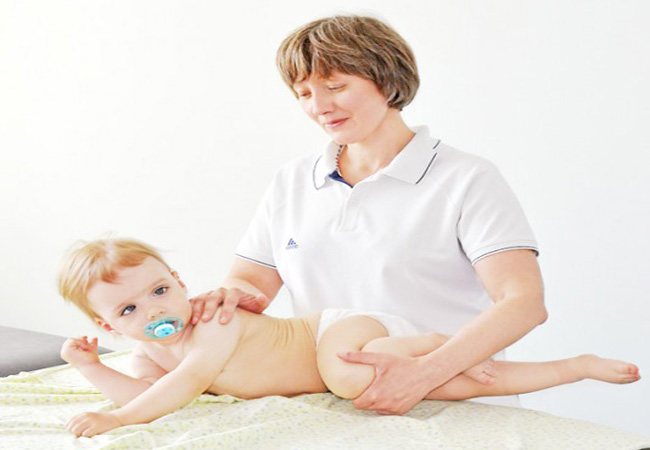
Massage technique for cerebral palsy
Carrying out segmental massage
In case of cerebral palsy, it is necessary to influence the segmental apparatus of the spinal cord through certain areas of the skin, receptors of tendons, ligaments and muscles with segmental massage. At the same time, the effect extends to the nerve structures of the brain of the head, improving blood circulation and trophism of the segments of the spinal cord and back muscles that fall under the massage.
Massage the segments along the spine from the sacrum to the neck inclusive. Then along the line that runs along the edges of the shoulder blade and around the shoulder blade, in the buttocks area and in the spaces between the ribs: stroking and rubbing, kneading, moving, drilling, sawing, stretching and vibration. Use your thumb, or 2 and 3 fingers. Between each technique, stroking and light shaking and vibration are done. Repeat up to 5 times, avoiding pain, until hyperemia appears.
To achieve muscle tone in the legs, the lumbar and sacrum areas are massaged. For spasticity, the cervicothoracic spine is massaged in the hands. In the atonic-astatic form with the presence of hypotonia of the back muscles, kyphosis, scoliosis, etc., massage is performed using all segmental massage techniques: first stroking, then drilling, sawing, traction and vibration. The techniques are performed first on one side, then on the other. During the massage, you need to feel the gap between the vertebrae with your fingers and make rocking, jerking movements within its area.
Massage according to the Manakov system
In case of cerebral palsy, massage techniques prevent the development of fibrous and adhesive changes in muscles, bundles of nerves and blood vessels, tendons, that is, they eliminate and prevent contractures and improve tissue trophism and the conduction of nerve impulses along nerve fibers. The direction of the massage is from the center to the periphery, from the proximal places of muscle attachment to the distal ones. An exception is massage of the hands and feet, where movements are directed from the periphery to the center.
The main technique is vigorous vibration pressure using two or four fingers, gradually moving towards the periphery. Fingers should not slide over the skin, but easily penetrate deep into the soft tissues, move apart and eliminate adhesions and pathological compactions, soften and lengthen the massaged tissues.
Application of acupressure
When performing acupressure, apply pressure to the point for 2-3 minutes. To use the stimulating method, apply short and strong pressure and combine it with deep intermittent rubbing (shading) and a sharp volume of the finger after each technique.
Inhibitory acupressure is used to relax muscles and reduce abnormal reflex activity or symptoms. Slowly rotate the finger clockwise, narrowing the massage area, up to 50-100 times. Warmth, relaxation and general calm should appear.
For a deep effect, the massage therapist first lightly strokes clockwise (30-50 times), then gradually deepens the finger with rubbing (20-30 times) and kneads and presses until a feeling of heaviness, numbness, bloating and aching appears. The massage is continued for another 20-30 seconds, and all techniques are repeated in the reverse order, moving counterclockwise and expanding the impact zones.
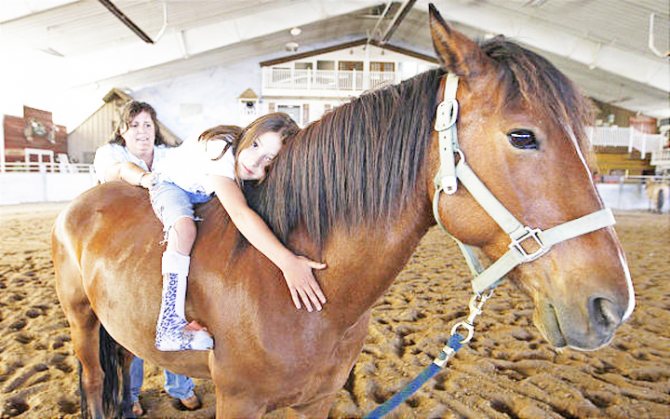
Combination of massage with other procedures for cerebral palsy
The use of speech therapy massage
Speech therapy massage is carried out with individual selection of body positions to eliminate pathological tonic reflexes. Particular care is taken in choosing postures: embryonic or lying on your back with a bolster under the neck and legs bent at the knees, postures - lying on your back with the head secured with bolsters or lying on your stomach with a bolster under your chest. After this, a speech therapy massage is performed. They work on the facial and chewing muscles in cerebral palsy.
When massaging the face and neck: stroke with fingertips:
- forehead from center to temples;
- eyebrows and forehead from the eyebrow upward to the border of the scalp;
- nose from top to bottom on each side;
- chin from the center and lead my fingers to the earlobes;
- from the center of the lips towards the earlobes.
To relax the muscles of the tongue, the following points are affected:
- submandibular fossa;
- nasolabial fold (symmetrical);
- zygomatic muscles (symmetrical);
- submandibular muscles (symmetrical)
Massage the lips from the center to the corners with light pinching, stroking and rubbing. Around the mouth clockwise, tap with your fingers, stretch and collect the upper lip, then the lower.
Speech therapy massage of the tongue is performed with active and intense movements from the root of the tongue to the tip: kneading and rubbing.
Combination of massage with other procedures
During the recovery period for cerebral palsy, massage is combined with exercise therapy, mud bath therapy, physiotherapeutic procedures, and orthopedic measures. Training in exercise therapy and massage normalizes the functions of the vestibular apparatus. The child raises his head in all positions, straightens his head and legs when lying on his stomach (with abdominal support), turns from back to side, tilts his torso to the side, etc. The child is taught to walk and lean on his legs: during the massage, the feet rest on stand, in the joints movements imitate walking. Hippotherapy has a good effect - riding on specially trained horses, aquatic rehabilitation in the pool, dolphin therapy.
Conditions for massage
When caring for a bedridden patient at home, massage has the most beneficial effect, since the patient is in the most relaxed state, both physiologically and psychologically. Transportation may be associated with a certain deterioration in the patient’s well-being, and in some cases is generally contraindicated. Ideally, the procedure is carried out using special equipment, but in some cases it is quite problematic to shift the patient, for example, if the patient has suffered a severe spinal injury and any movement is contraindicated.
Therefore, medical beds are used for regular sessions at home.
Speaking about the regularity of sessions, it is necessary to clarify that the frequency and intensity of the massage directly depends on the nature of the patient’s disease, his condition, age and even gender. In most cases, the course begins with a short exposure, subsequently the intensity of the massage increases, the average duration of a rehabilitation massage session is about 30 minutes. The number of sessions can vary from 5 to 25, but most often the massage is continued until positive dynamics occur, and in some cases, until complete recovery.
Massage equipment
If the patient's condition allows, massage can be performed daily. If there is a special medical functional bed with height adjustment in a medical institution (or at home), the massage therapist can completely do without special equipment. A medical bed allows the massage therapist to easily access the part of the body that needs to be affected through massage.
Technical solutions implemented in modern beds for bedridden patients allow the patient to adjust the height of the bed (provided his condition allows this) or the person who cares for the patient (regardless of physical characteristics). The mechanism for adjusting the height of the bed can be electrically or mechanically driven, which greatly simplifies the process of preparing for a massage session.
If a bedridden patient can perform certain movements independently, then the participation of a professional massage therapist can be limited by teaching the patient a number of massage techniques that can be done on his own. A functional bed with adjustable sections can significantly make this task easier for the patient - medical equipment can provide the most comfortable position for the patient’s body during a massage. Side rails that are equipped with medical beds for bedridden persons are also a useful addition. The guards are made of light but durable metal, can be raised and lowered, and are used to ensure that the patient does not accidentally end up on the floor as a result of careless movements.
Technological component and classification
Today there are several types of speech therapy massage for children:
- Classic manual, used without taking into account reflex effects. It is performed in close proximity to or directly on the affected area of the body.
- Acupressure, in which there is a local effect on biologically active zones that correspond to the specifics of certain diseases.
- The hardware test, accordingly, is carried out with special devices.
- Segmental-reflex, based on the principles of body structure in segments: neck, collar area, scalp, face;
- Probe massage based on the Novikova technique for the tongue and cheeks, lips and cheekbones, as well as the soft palate. Its main focus is the normalization of the spastic state of the muscles.
- Self-massage - the definition speaks for itself. In this case, the child can not only manipulate the face with his hands, but also reproduce the tongue massage with the help of his teeth.
Modern speech therapy is constantly searching for ways to improve speech development, adapted for children with special educational needs. Speech therapy massage for children includes:
- technologies for correcting sound pronunciation, including the production of different sounds;
- formation of speech breathing in various pronunciation disorders;
- voice correction and development of intonation;
- formation of speech self-regulation skills.
Considering that after a course of correction and speech development, children have some difficulties with updating speech utterances, speech therapy techniques are also aimed at such goals as enriching and improving vocabulary. This is done with the help of didactic syncwine, which, without disturbing the system of influence on speech pathology, ensures its logical completeness, not only develops speech, but also memory, attention, and thinking.
Contraindications for massage
Speaking about the benefits of massage, it is necessary to mention contraindications - patient conditions in which massage will be the cause of the development of the disease, and not a means of recovery. As already noted, massage helps accelerate the body’s metabolic processes, and there are a number of diseases in which excessive acceleration can lead to a deterioration in the patient’s condition.
Almost all infectious diseases are like this; the principle of their treatment lies precisely in localizing and suppressing the source of infection throughout the body. The acceleration of metabolic processes, which is a consequence of massage, on the contrary, leads to the spread of infection. Thus, massage is contraindicated in the following cases:
- respiratory diseases (sore throat, flu, ARVI);
- skin diseases (fungal, furunculosis, infected wounds);
- peptic ulcers, tuberculosis (active form);
- acute gynecological diseases.
Who needs?
Speech therapy massage actively uses the muscles of children involved in the reproduction of sounds - the tongue, muscles of the face and throat. In addition, speech reflects mental processes, so the development of the hemispheres improves it. This is facilitated by hand exercises and massage.
Massage is one of the most common ways to combat many ailments, especially in young children. Pressing and stroking certain muscles and points on the body stimulates them and promotes active activity. Of course, a qualified specialist will cope with this task most effectively. But even after several lessons, mothers can carry out similar exercises with their children at home. Refer to video tutorials for help.
